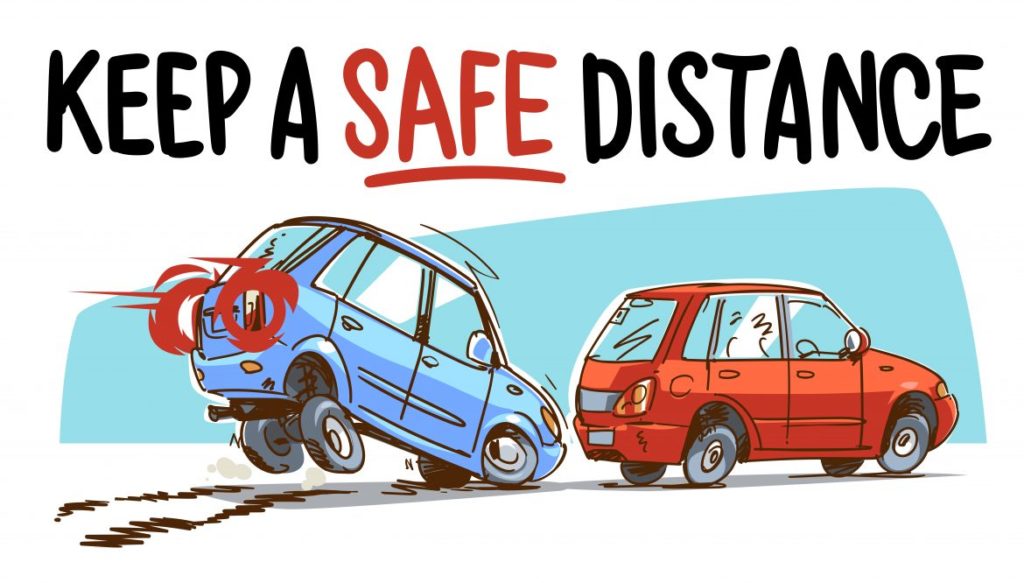
Basics of Driving Safety
At the most basic level, the one beginning concept that all technology and training ought to focus on is to make the driver continually have an awareness of maintaining a safe amount of time and a safe amount of distance to respond to anything happening in front of the vehicle. Speeding, lack of following distance, erratic lane changes, generally aggressive driving, distractions of any type, etc. will all contribute to making driving more dangerous. This is because the end result of all these behaviors is that the driver has less time and less space to adjust to unforeseen driving circumstances ahead. As the driver lessens the time and space available to react to any given situation, the result is an inevitably increased probability of being involved in an at-fault accident.
Enter the “Distraction Generator”: The Cell Phone
Cell phones have become a ubiquitous part of everyone’s life now. The problem, of course, is when this wonderful technology is looked at, handled, or touched by anyone who is operating a motor vehicle. Valuable seconds with the driver’s eyes away from the road can be catastrophic. NSC and insurers are aware that somewhere in the range of 25% of all accidents are caused by cell phone distraction. When we look at how cell phone misuse specifically creates more risky driving environments, it is clear that being distracted by a cell phone, while driving, causes a lag in the time to respond to any road situation.

From Nice-to-Have to Must-Have
The legal system is getting very aggressive at punishing fleets who are involved in an accident caused by cell phone distraction. The “fingerprint” of the classic distracted driving event is an at-fault rear-end collision with the vehicle or object in front of you. Something other than the road situation has commanded the driver’s attention. Even if this only happens for a second or a few seconds, it is often the difference of being able to respond to the road risk or simply not having the time or space to respond. If you are using a cell phone while causing an accident, the words “at fault” and plaintiff attorney will become very familiar to you.
The Good News
The good news is that both cell phone distraction and speed management are behaviors that drivers respond to correcting in a very positive fashion. As opposed to classic elements of driver scorecards and the reporting of risky events (braking, accelerations, turning, etc.), the reporting of cell phone use and speeding (compared to posted speed limits) create very accurate summaries of the behavior. Speeding and phone distraction are both very bad habits, but when these habits are pointed out they are relatively easy habits to correct. Cell phone distraction avoidance is actually somewhat unique in that cell phone usage can be blocked or a warning can be given when the driver attempts to use the phone while driving. A high degree of safety improvement can be expected purely from the real-time intervention between the driver and the phone. Cell phone distraction avoidance technology can be low cost, simple to implement, require no additional hardware in the vehicle, and create very little management burden to achieve significant results.
A Simple Experiment
A very simple experiment will confirm the impact of allowing yourself more time and space to respond to risky driving situations. Try sometime to just slow down a little bit on a drive you may make regularly. By doing so, you have provided yourself with more time and space to respond to driving risk. It won’t take you as long to stop and your vehicle will not travel as far after a braking event, compared to when you were going at a higher speed. What you will notice at slower speed, is that there is much less tension related to the drive. This is because you are under less stress to be on the razor’s edge of risky driving. You can relax more, knowing that you have more time to respond to any given situation. You will also be safer to other vehicles you share the road with since they do not have to go through unnatural acts to stay safe from your more aggressive behaviors.
Slow down, pay attention…..you are now giving yourself the time and space to be a safer driver. Now, use technology to mitigate the risk of cell phone distraction and you will help make the roads a safer place.
To read more about the impact that distracted driving is having on Fleet Safety, see our most recent articles below:

